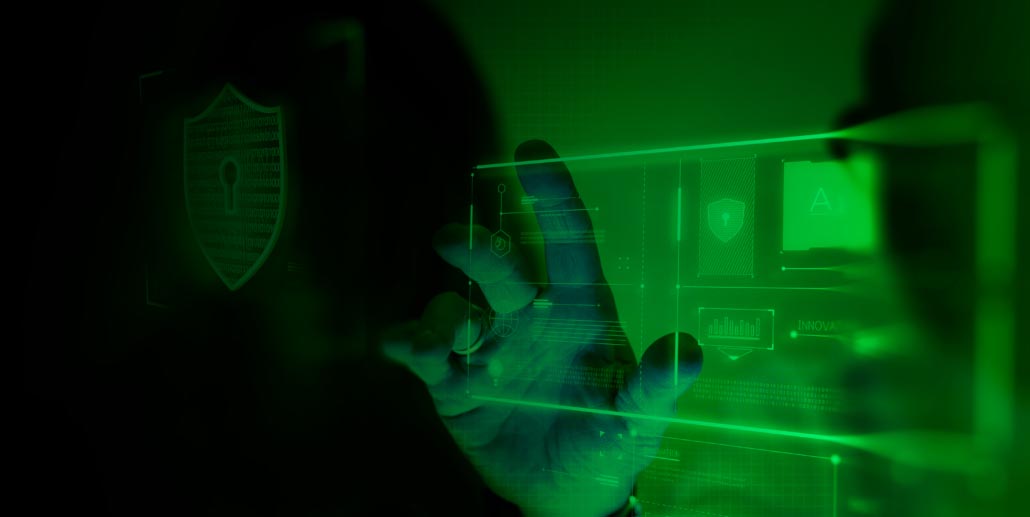Scanning for Vulnerabilities like Log4Shell – How Does It Work?
Greenbone’s vulnerability management finds applications with Log4j vulnerabilities in systems that definitely need to be patched or otherwise protected. Depending on the type of systems and vulnerability, these can be found better or worse. Detection is also constantly improving and being updated. New breaches are found. Therefore, there may always be more systems with Log4Shell vulnerabilities in the network. For this reason, it is worthwhile to regularly update and scan all systems. The Greenbone vulnerability management offers appropriate automation functions for this purpose. But how are vulnerabilities found, and where can they be hidden? Why are vulnerabilities not always directly detectable? The following article will give you a brief insight into how scanning for vulnerabilities like Log4Shell works.
A vulnerability scanner makes specific queries to systems and services and can read from the responses what kind of systems and services they are, but also what products are behind them. This also includes information such as their versions or even settings and other properties. In many cases, this makes it possible to determine whether a vulnerability exists and whether it has already been eliminated. In practice, these are sometimes highly complicated and nested queries, but above all they are also very, very many. Entire networks are scanned for thousands of different vulnerabilities.
The Log4j vulnerability “Log4Shell” (CVE-2021-44228) is a flawed program library used in many web services products. Therefore, partly it is directly visible through a vulnerability scan, but partly it is hidden behind other elements. That is why there is not only one vulnerability test for Log4j, but several. More are added all the time because the manufacturers of the respective products share relevant information and also provide updates to close the gaps. The list of systems affected by Log4Shell is constantly updated at https://gist.github.com/SwitHak/b66db3a06c2955a9cb71a8718970c592.
Some of the vulnerability tests require an authenticated scan. This means that the scanner must first log into a system and then detect the vulnerability in the system. An authenticated scan can provide more details about vulnerabilities on the scanned system.
The vulnerability tests that are suitable to find the Log4j vulnerability are provided collectively in a scan configuration. Greenbone keeps this “Log4j” scan configuration continuously up-to-date in order to keep adding new tests. As a result, a scan may report a Log4j vulnerability tomorrow that was not found today. It is therefore advisable to configure the Log4j scan to run automatically on a regular basis. This is especially important in the next weeks, when many software vendors are gathering more findings. Greenbone continuously integrates these findings into the tests and the scan configuration.
Does a Vulnerability Have to Be Exploited to Find It?
Exploiting a vulnerability to find it is not advisable. And fortunately, it is not necessary either. Doing so could cause the very damage that should be avoided at all costs. Moreover, a product vendor that provides vulnerability exploitation as a feature would potentially strongly encourage misuse of that feature, which raises further – not only legal – issues. Therefore, Greenbone’s vulnerability management does not include such features.
Exploitation of the Log4j vulnerability as attackers would do is also not required to prove the existence of the vulnerability. Greenbone has developed several tests to prove Log4Shell, each of which looks at systems in different depths. Several tests can detect the Log4j vulnerability with 100 % certainty, most with 80 % to 97 % certainty. Some tests also collect indicators of 30 % where they do not get close enough to the vulnerability. Each test at Greenbone makes a statement about detection certainty, which is stated as “Quality of Detection.”
What Is the Role of Software Product Vendors?
Manufacturers of a wide variety of products can use Log4j libraries, which are now vulnerable with it. Product manufacturers have included Log4j in different ways. Usually, a deep scan can find Log4j without the vendor’s help. However, most manufacturers also support the process through public vulnerability reports. These can then be used to write vulnerability tests that can provide a reliable vulnerability statement even with less deep scans. The reason for this is that the scans can use simpler configurations through vendor information. In addition, they also run faster.
In principle, however, a vulnerability scanner can also check and find vulnerabilities without the manufacturer publishing a vulnerability report.
Conclusion
Vulnerability management is an indispensable part of IT security. It can find risks and provides valuable information on how to fix them. However, no single measure provides 100 % security, not even vulnerability management. To make a system secure, many elements are used, which in their entirety should provide the best possible security.
This is comparable to a vehicle, where the passenger compartment, seat belts, airbags, brake support, assistance systems and much more increase safety, but can never guarantee it. Vulnerability management makes risks controllable.
Elmar Geese has many years of experience in IT and IT security. He has been a member of the Greenbone management team since 2018 and a member of the Greenbone AG Executive Board since 2023.
He is particularly interested in the topics of management, security and the management of security, so-called artificial and human intelligence, especially in the context of cybersecurity.
As a trained musician, he still enjoys playing various instruments and is a great fan of classical music.




